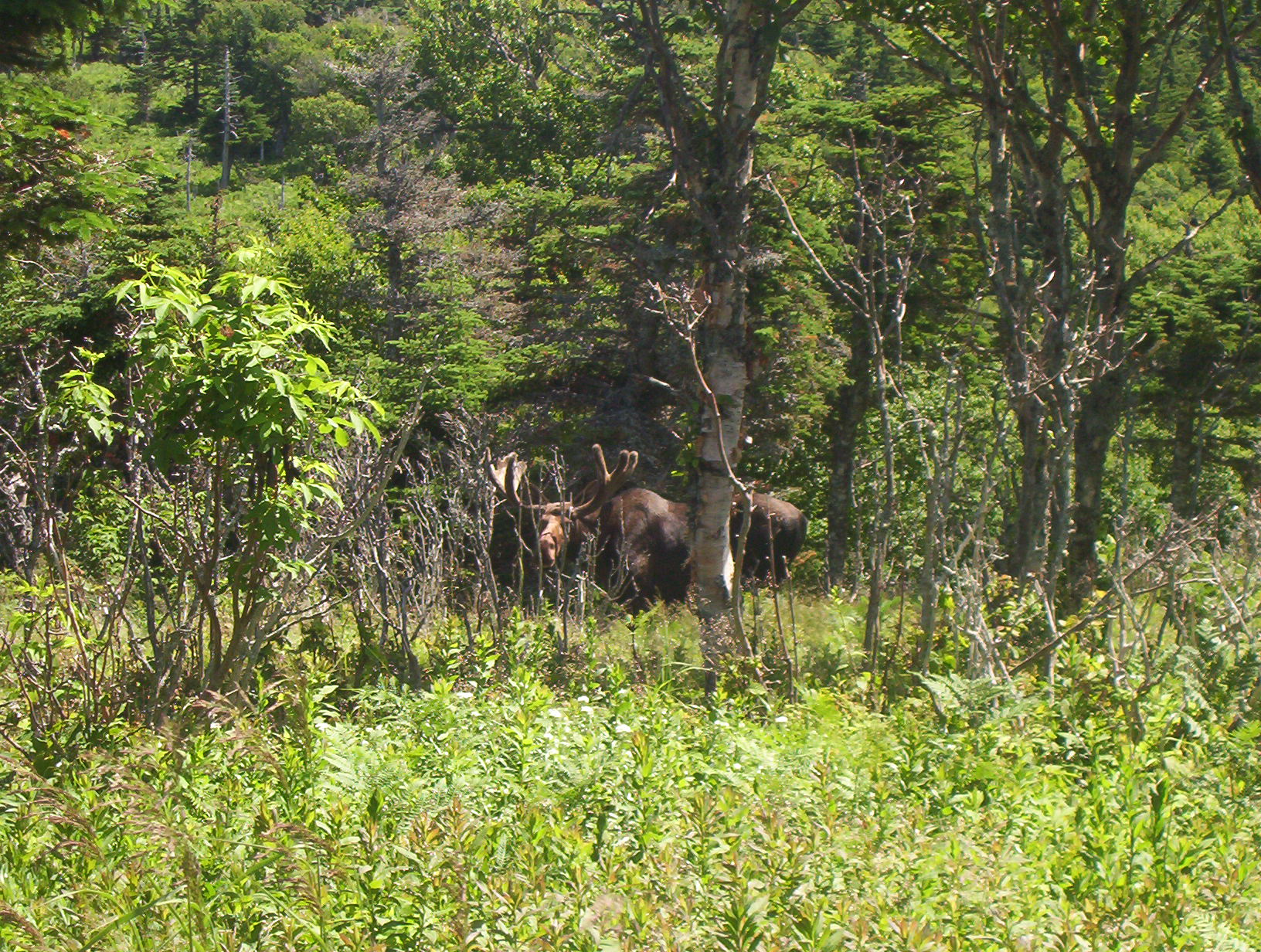 | We were on the boat every morning at 9:30am. We went out once a day, sometimes twice, and one day we went out three times. We saw Pilot Whales on every trip. |
 | Pilot whales are the second largest member of the Delphinidae Family. The largest is the Killer whale. Pilots grow to between 6-9 meters. They eat mainly squid and find food through echo location. One night during the trip I had this dream that we were studying Killer whales, and that I had been chosen to write a TV documentary about it. It was a lot of responsibility, and I had writer's block. I really didn't want to do it, and I was relieved when I woke up and discovered it to be a dream. I also had a dream that week that I was on Much Music and I had to sing a song in french to the tune of "We Will Rock You." I was really nervous because I couldn't remember the french word for a thousand. |
 | It wasn't all fun and games, we did have work to do. We were in teams of two and each team was researching something different. Everyone was using either photo-ID data, or acoustics, for their studies. Me and my partner used a depth sounder. Our study was so basic, it's sad. You can read it here. |
 | This is a nice picture. It shows the difference in body sizes. Compare the dorsal sizes between the two. You can also get an idea of the rounded head shape. |
 | This would be a good pic for photo-ID if it were closer. You can see the markings on the dorsal. Dorsal fins are scored, and only fins with scores higher than 3 can be used in photo-ID studies. This eliminates quite a few individuals, so studies based on photo-ID data are really only studies of identifiable whales, and not the whole population. Having said that, taking pictures for a photo-ID study is hard. Our prof had a new digital camera that cost more than my entire net worth. We each got a chance to use it. It sounds easy: you watch the whale come up, focus on the dorsal fin, then take the picture. Except you're on the upper deck, the boat is pitching, and while pilot whales are relatively slow, they aren't just gonna stand still for you. At first I got a lot of pictures of water where the whale had just been. After awhile I ended up getting some good pictures. It takes a lot of practice. |
 | 
|
 | 
|
 |
On the day that we didn't go out, we drove for about 10 minutes down this coastal dirt road. There was a buddhist monastery there, but we weren't there during visitng hours, so we couldn't get a tour.
Instead we went to this place, I forget what it was called, not a monument but some other word. It was quite beautiful, and serene. It was meant to bring peace to the area, and give peace to the people who visit it. There was 59 principles carved in marble walls. They were principles forliving a good life and being a good person. There were things like:Don't be Predictable Don't Expect ApplauseQuite a few of them were negative like that. They reminded me of a U2 song called Numb, which gave us my favourite piece of advice, "Don't expect: suggest." That's me in the picture, shielding my eyes from the sun. The next two pictures are group shots. I won't identify people, because I didn't ask anyone if they minded. I will say they were a fun bunch of people and it was a great trip. |
 |

|